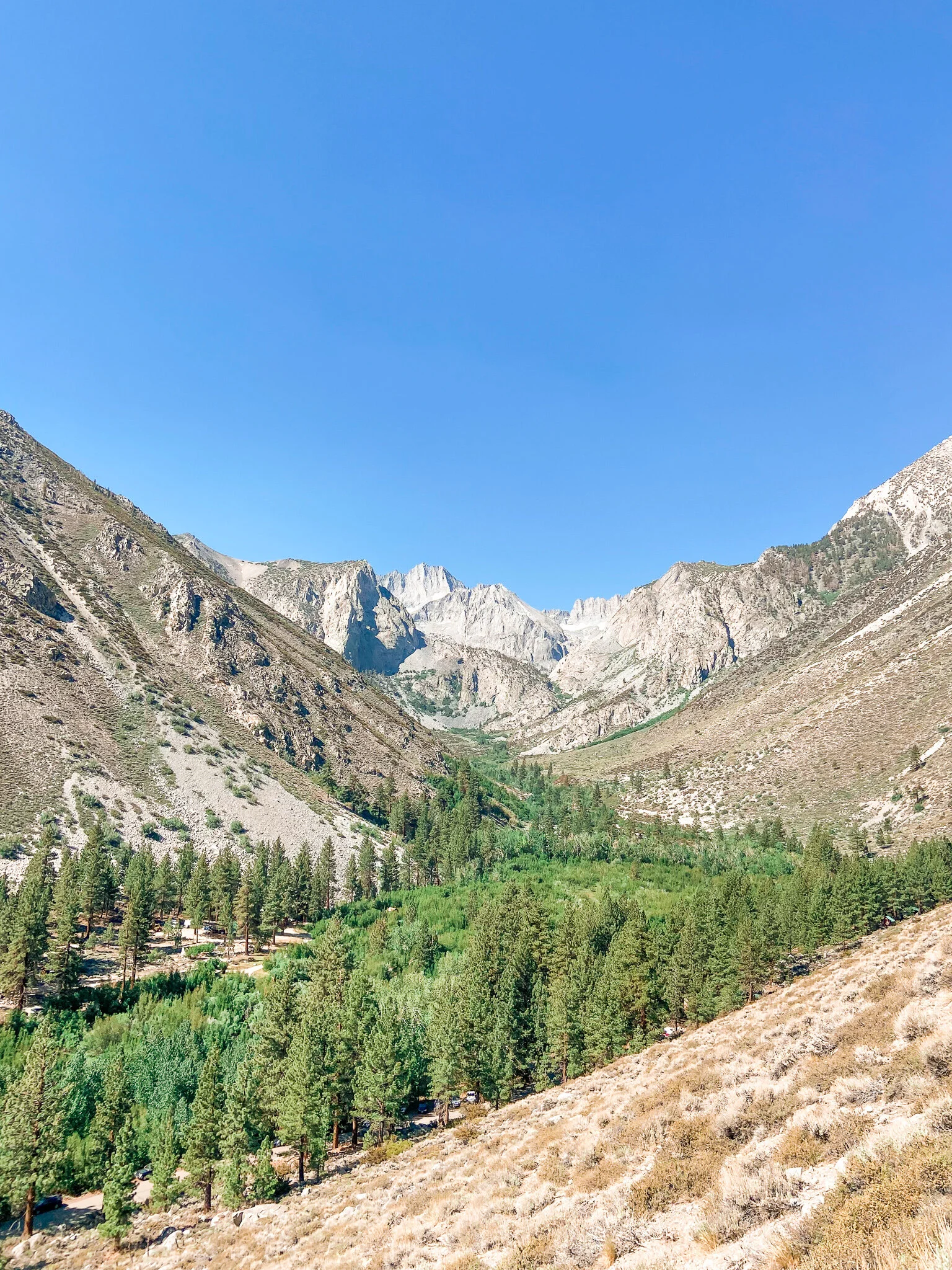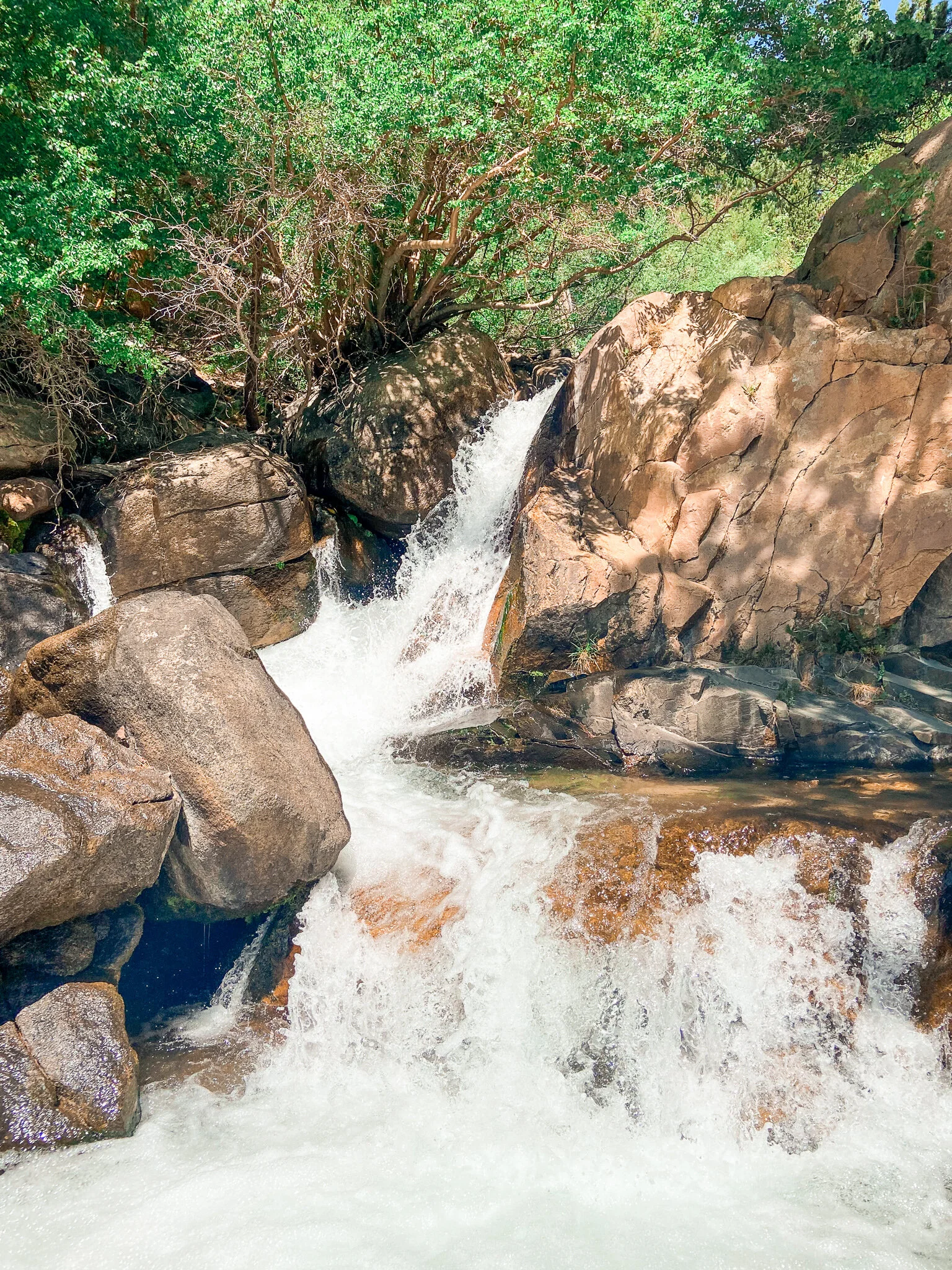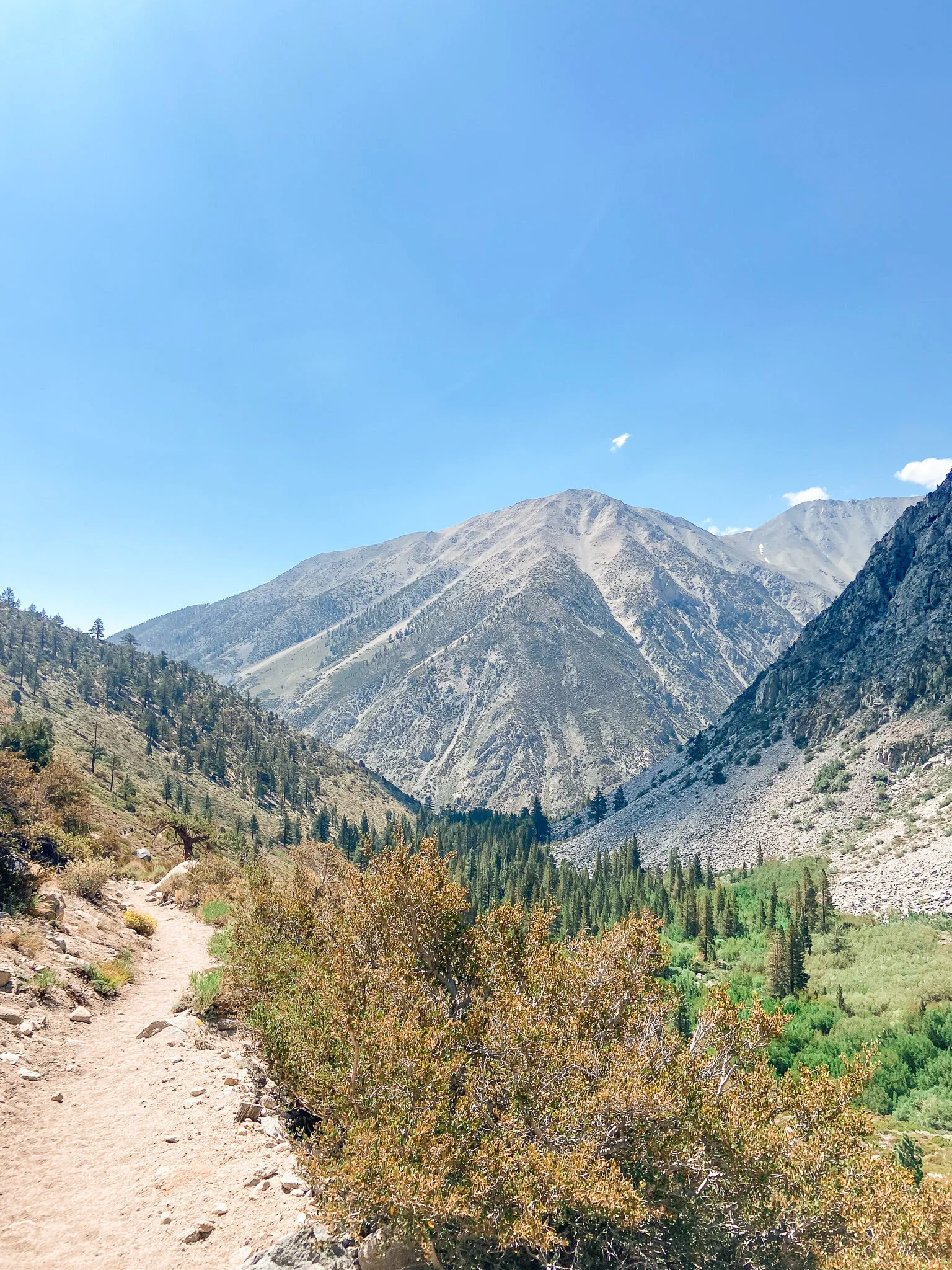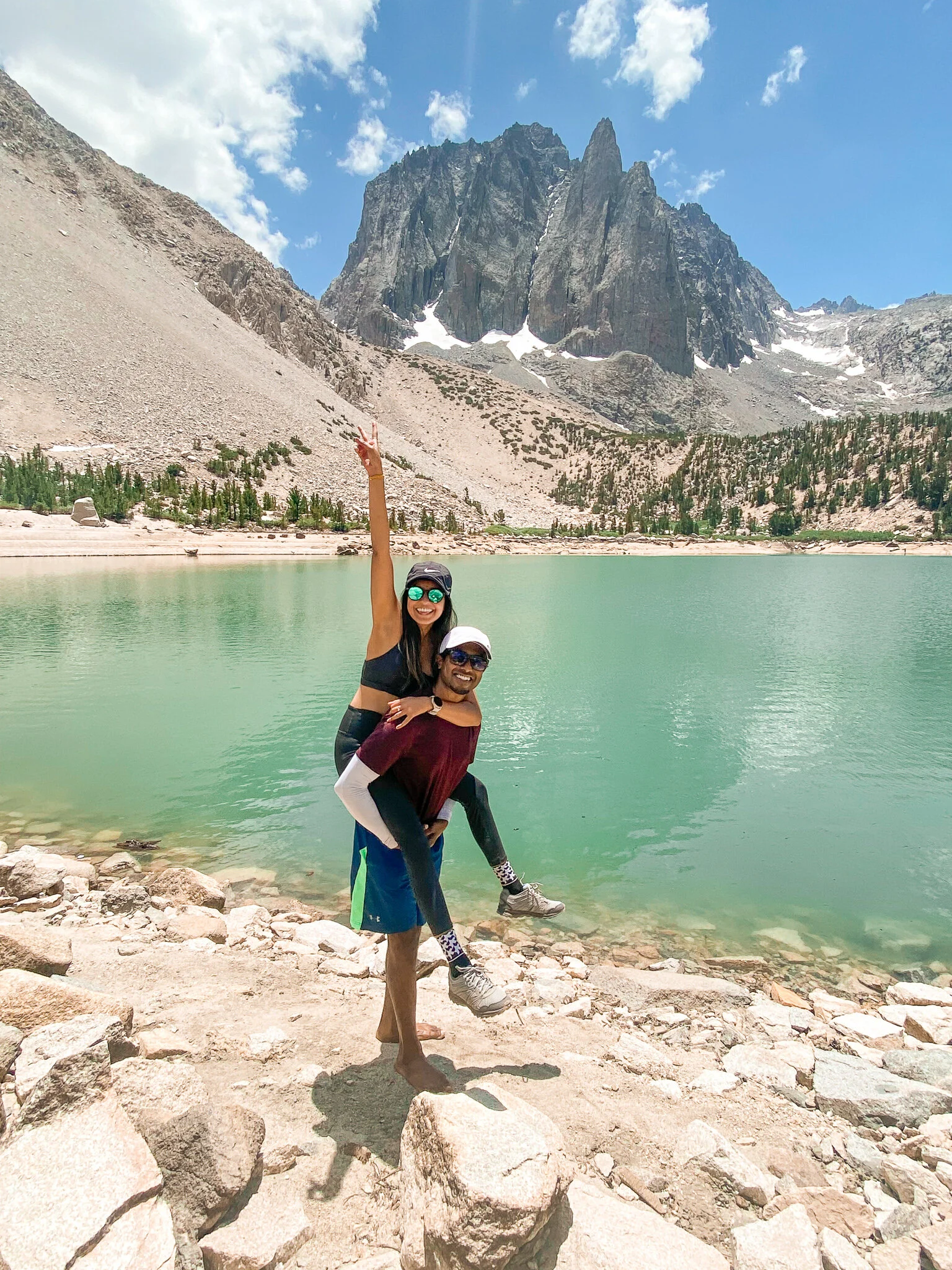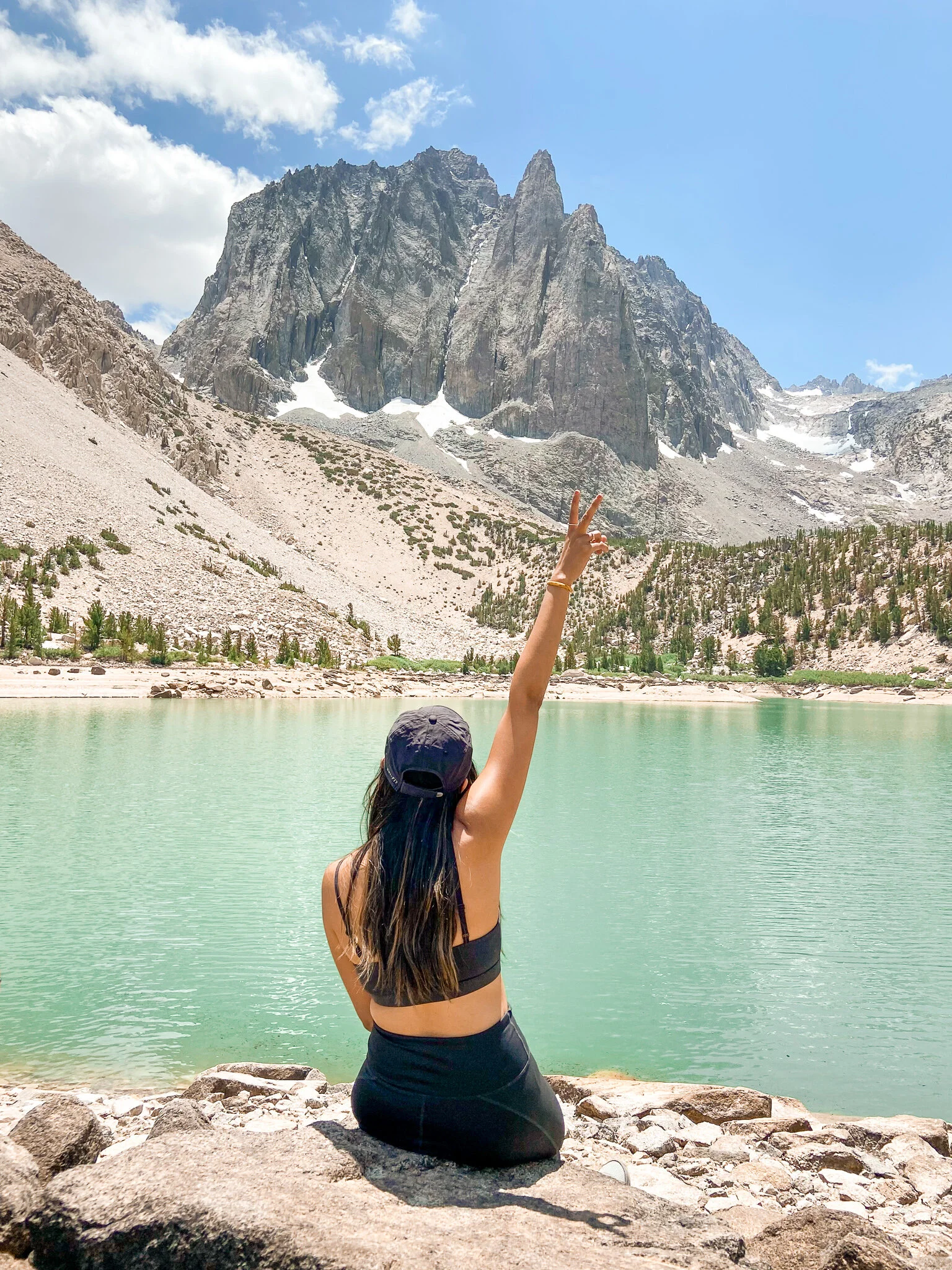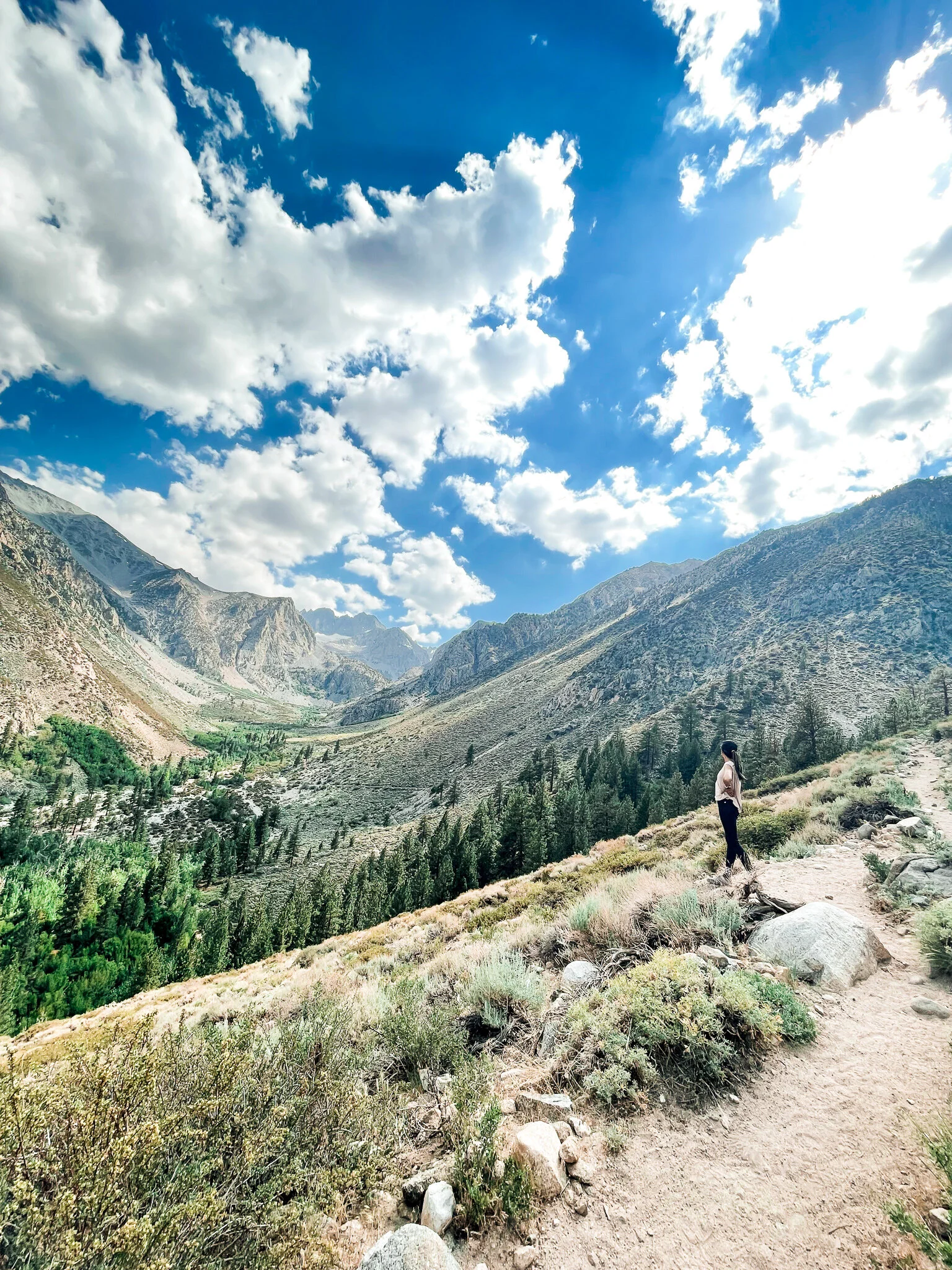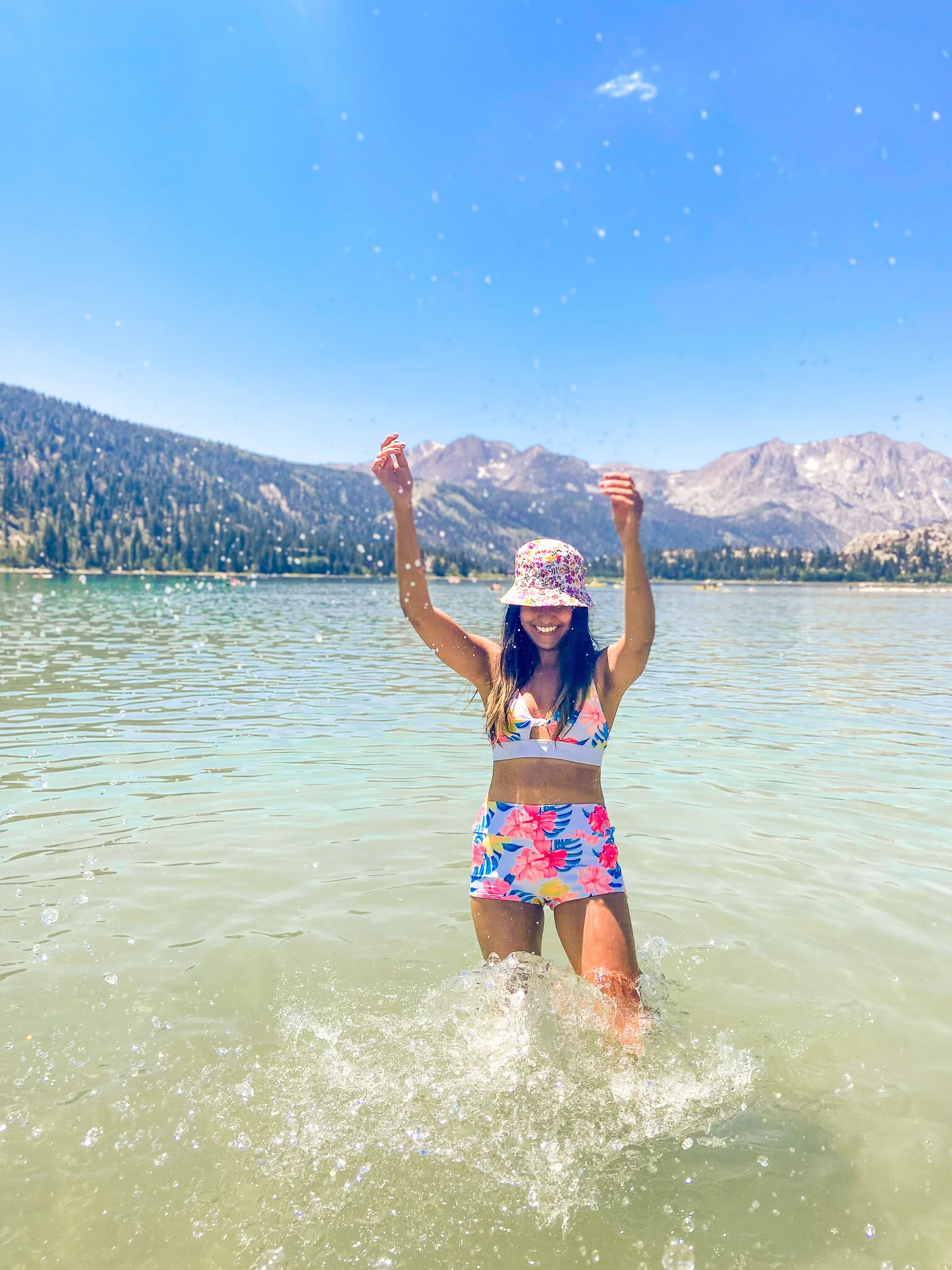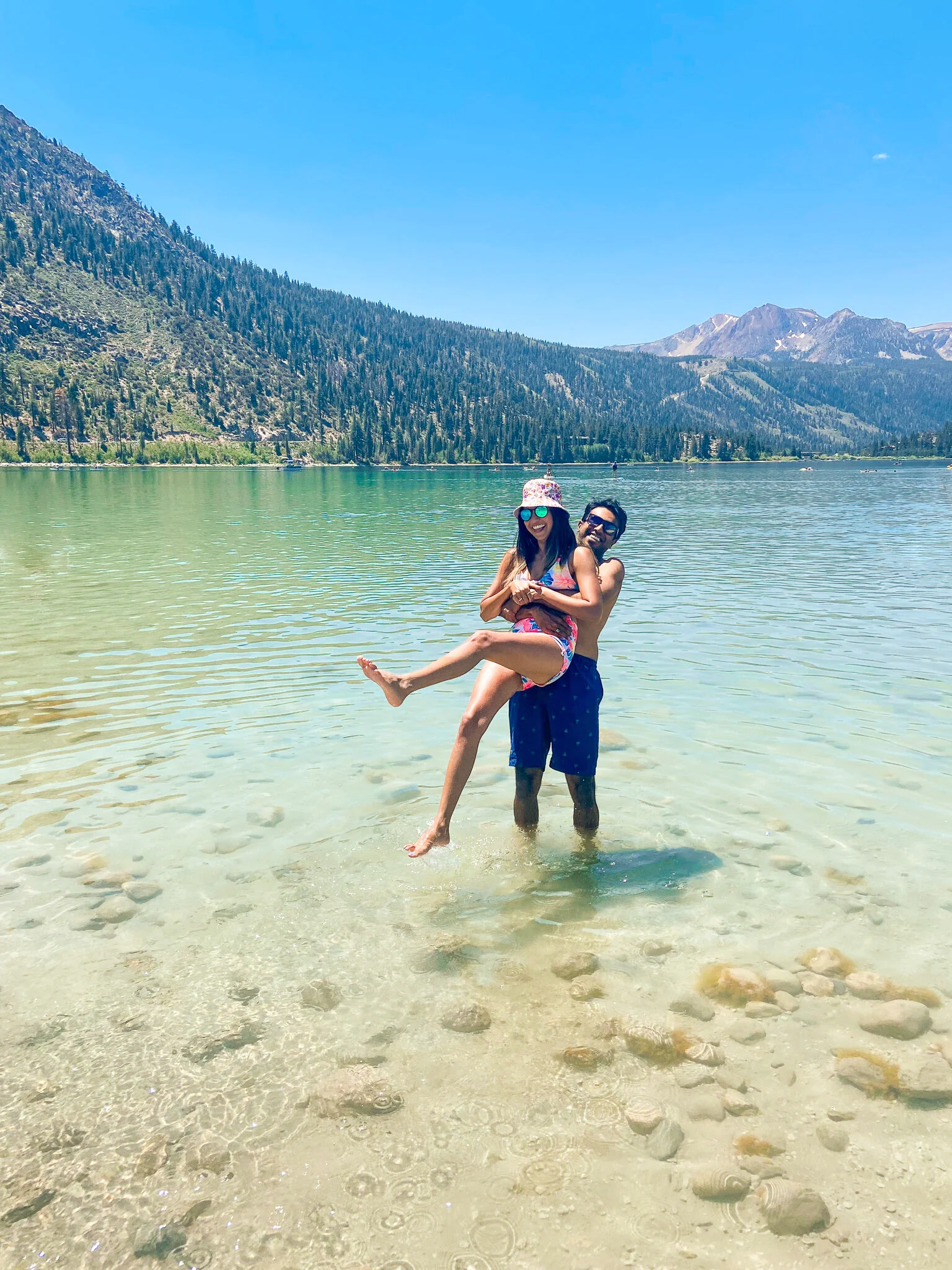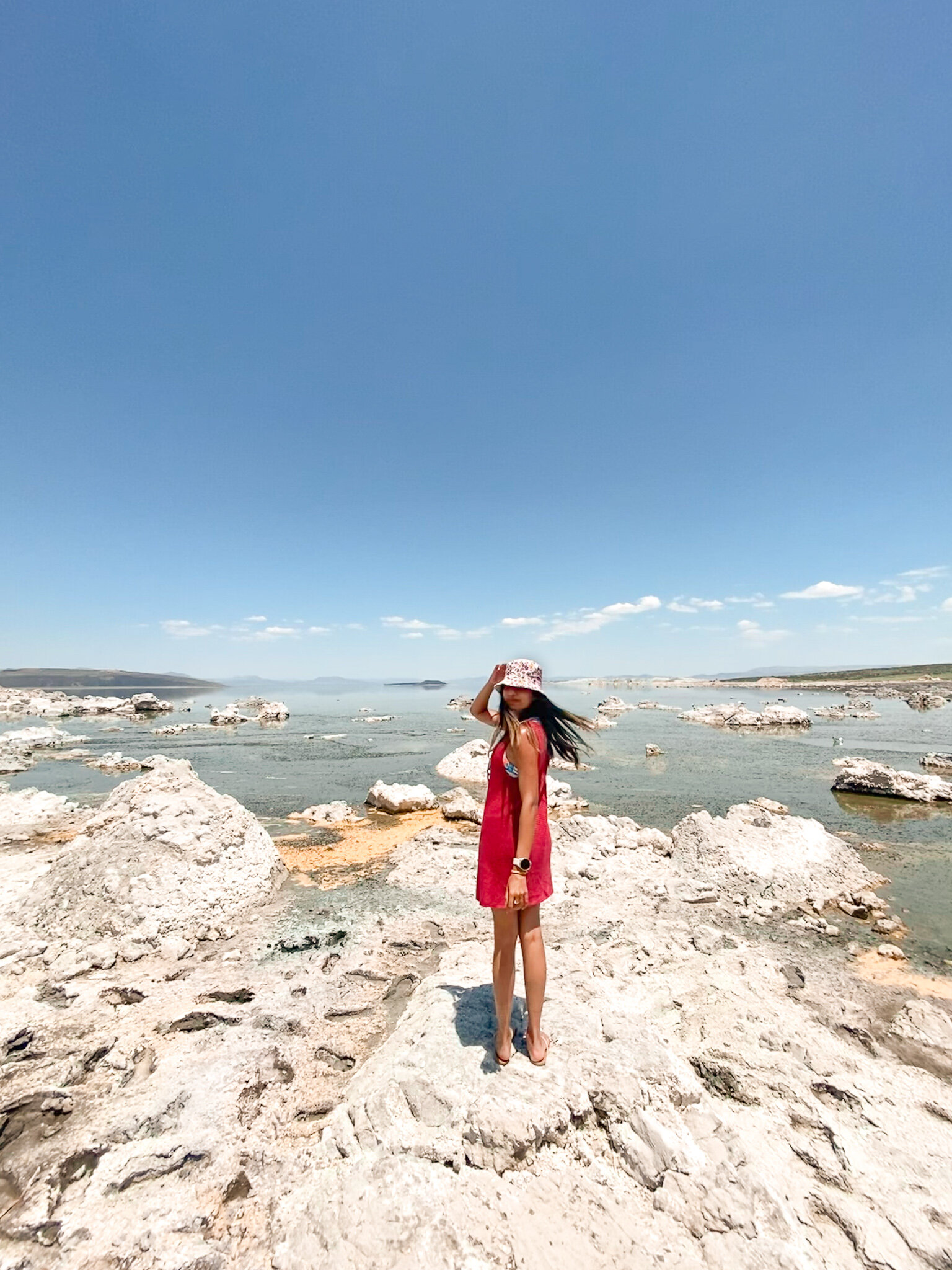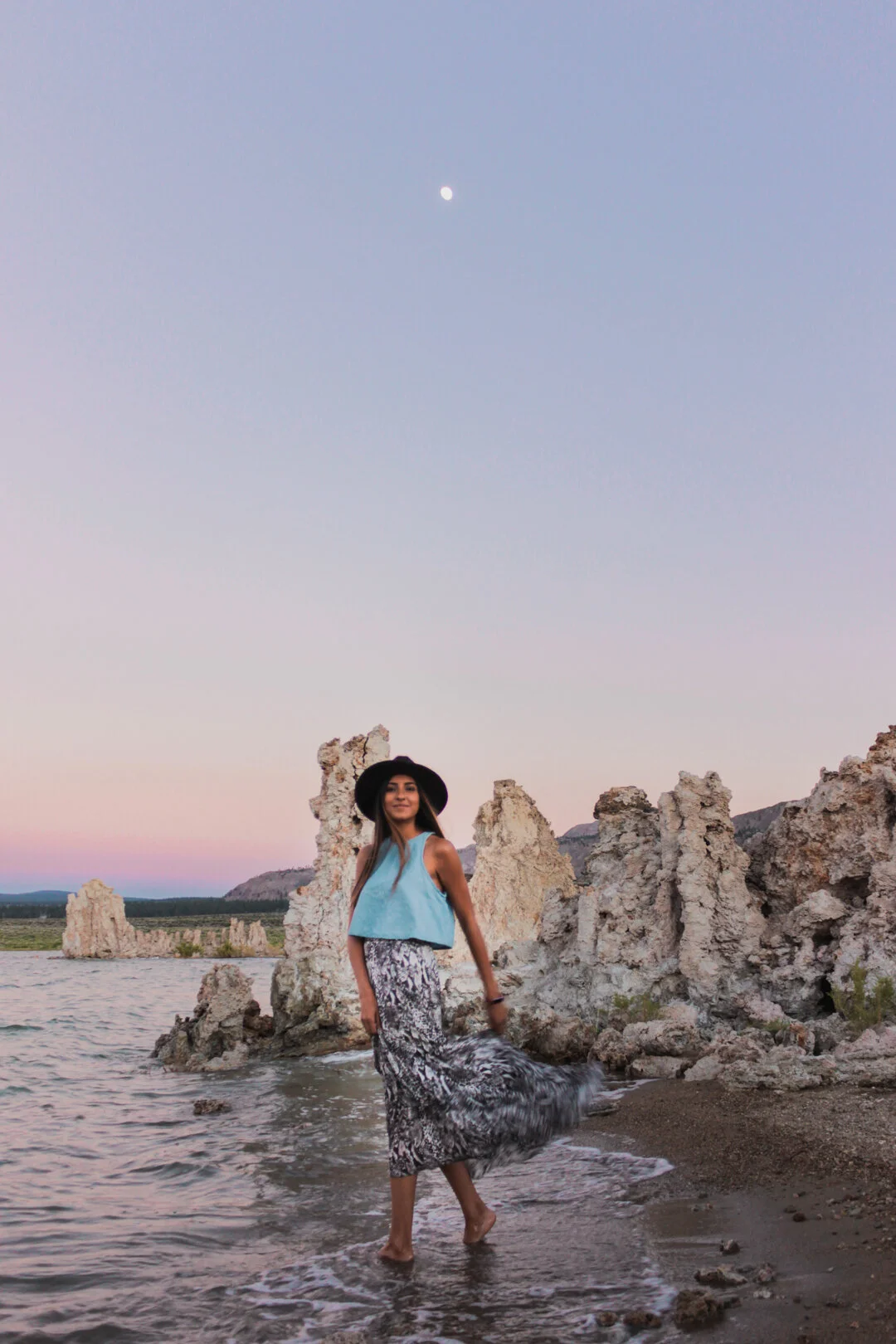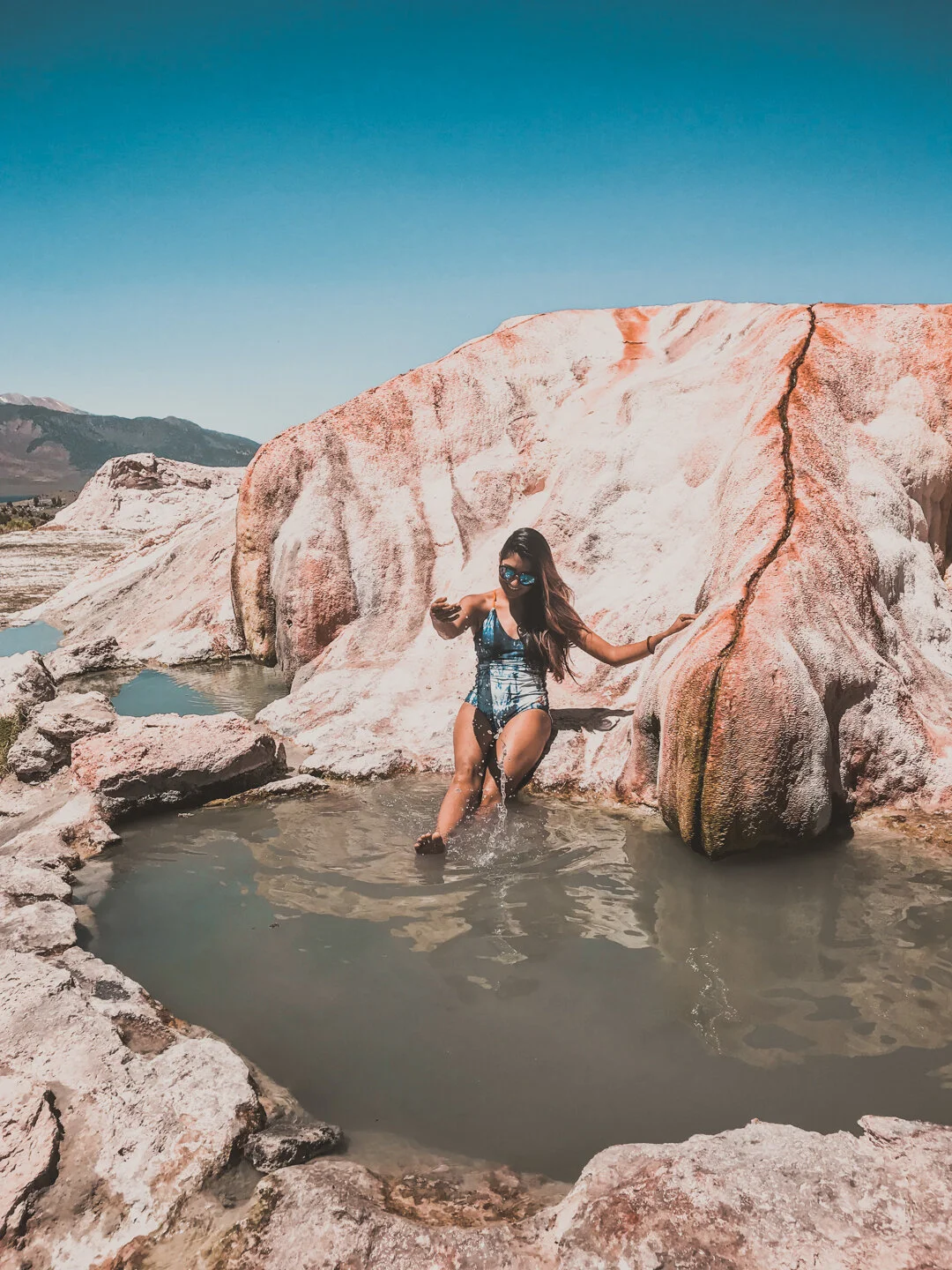The Hike to Big Pine Lakes (+ A Mammoth Lakes mini-Guide)
/It’s only California’s most epic hike, NBD. 🤩
I’ve had Big Pine Lakes on my CA travel wishlist since moving to the Bay Area 4 years ago and we finally made the roadtrip happen in June! The high altitude at which the lakes reside limits accessibility to two windows of time- the Spring and the Fall. With the latter in near sight (how? 😲), I wanted to get this post up and ready for those of you kindred spirits that expressed interest in visiting this year.
TL;DR- If you find yourself with a free weekend in California this fall, make it happen!
The hike
The Big Pine Lakes trail is a 14 mile out-and-back trail through seven lakes in the Eastern Sierras, rated hard because of the 3,982 ft. of elevation that one’s required to conquer on the way up. The first few miles of the trail are exposed mountainside with little to no shade, giving early starters the advantage of minimizing the climb in harsh heat. It is scenic though, taking you through grand vistas, waterfalls, streams and at the end, even short shaded forests. The hardest part is until the gorgeous views of the first lake start to appear; shortly thereafter is the second lake. If you’ve googled the lakes/hike and seen photos of a stunning Patagonia-like mountain-scape, this second lake is what you’ve seen. The sight of the jagged peaks of Temple Crag against the lake is majestic enough to bring to mind Torres del Paine and made the arduous climb so worth it! The lakes are fed by glaciers and in June when the snowmelt was fresh, our tropics-bred selves couldn’t brave a swim. But later in the summer and early fall, the lakes are supposedly much warmer and friendlier!
The hike can be planned as a day-hike or as an overnight camping trip. Camping requires a permit which can be hard to get, but when we reached the lakes and saw the camp sites, I was low-key wishing we had done it! It would allow you to see all 7 lakes and really spend time by the water if you chose to. Those who can push themselves can even follow the trail to its very very end, the Palisade Glacier itself. Our day-hike was an abridged version of this, starting out at ~8am to climb up to lakes 1 and 2 after which we turned back. We were okay with this as lake 2 was our primary destination on the trail and we wanted to spend the most time there. After a lunch picnic and soaking it all in lakeside, we reached comfortably back to our car by 3pm.
As with any long hike, take lots of hydration and snacks and energy replenishments! Take as many breaks as you need and think of that amazing view when it gets hard.😬And oh, there are no restrooms beyond the trailhead so make sure to use them before you start.
When to go
The best time to hike the trail is in late Spring after the snowmelt or in early Fall before the first snow. The heat in the Summer is no joke and the high elevation means that the snowfall closes the trail late fall through early Spring. We were there in early June and the temperature was in the 90s by mid-day! An advantage to visiting in the Fall is that the area is a prime local destination for catching Fall foliage, although I would make extra sure that the trail is still open in the exact window of time you’re planning to visit.
It’s also a good idea to plan the hike on a weekday if possible for easy parking and an uncrowded experience.
How to get there from the Bay Area
The trailhead is at Big Pine Creek Campground in Inyo National Forest, about a 5h drive without traffic from the Bay Area. After the snowmelt when it’s open, the shortest route is through Tioga Pass in Yosemite National Park. If that park has been on your list to visit, the drive makes for the perfect excuse to plan a combined itinerary. But even if just driving through, I’d recommend planning for some extra time to check out iconic Yosemite landmarks along the way like Tenaya Lake, Tuolumne Meadows and the Tioga Pass viewpoint.
Where to Stay
If you’re not planning to camp overnight on the trail, there are three locations to choose from for your home base. Needless to say, the Big Pine Creek Campground would be the closest to the trailhead if tenting up for the night is your preference. If a bed on four legs is more your pace, Bishop is the nearest town about ~40 minutes away with many motels/hotels and a few Airbnbs. The furthest away but most suitable for exploring other nearby attractions is the town of Mammoth Lakes, well known for summertime lake hopping and winter skiing. We stayed at one of the many condos on Airbnb and while we did have to plan for the extra 1.5h drive to the trailhead, we enjoyed the easy access to restaurants and lakes nearby through the rest of our long weekend there.
This was the second time K and I explored the Mammoth Lakes area and it’s such a fun roadtrip destination from the Bay Area! Scroll through for a little list of other favorite activities in the area consolidated from our two visits.😊
Have a lake day at June Lake
If you’re looking for a spot to soak those sore legs after hiking or skiing or other activities of choice, I couldn’t recommend this lovely family-friendly spot enough. Pro tip: June Lake is one of Northern California’s top destinations for fall colors!
2. Visit the Tufas at Mono Lake
The Limestone towers called as ‘tufas’ that make up Mono Lake’s wonders are a sight to be seen with one’s own eyes! Having been once in 2018, we were sad to notice that the lake and the tufas were much reduced in size this year, putting the fragile ecosystem thriving in the unique water composition at risk. See photos below for a visual perspective on this hopefully reversible difference across time.
2021
2018
3. Check out the Hot Springs in the area
Because Mammoth Lakes sits at the edge of a volcanic crater with a long active history, it’s dense with natural hot springs. While it’s entirely possible to spend an entire day or more treasure hunting hot springs, a couple are worth including in your itinerary for a unique, possibly therapeutic experience. Wild Willy’s (also called Crowley’s Hot Springs) and Travertine Springs both have multiple small pools if you’re looking for privacy, Shepherd Hot Springs is easily accessible (which can mean more people) and Pulkey’s Pool has incredible views of the Eastern Sierras as the backdrop.
We went to Travertine Springs back in 2018 and really enjoyed a soak in one of the many small pools that we got all to ourselves. Note that clothing is optional at most hot springs in the area and it isn’t uncommon to find locals and visitors alike sans bathing suits!
And that’s a mini-guide to the Big Pine Lakes and the Mammoth Lakes area! Have you been to, or wanting to go to, any of these places? 🙂
Thank you for reading and have a great week ahead!
XO Sushmitha :)

